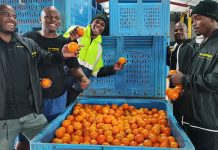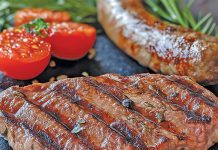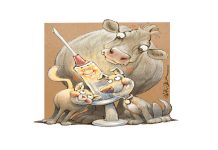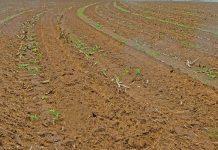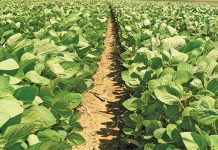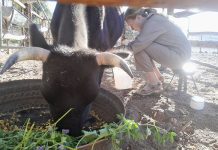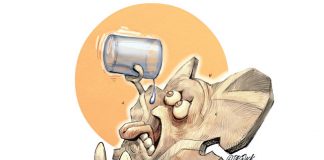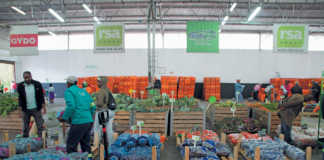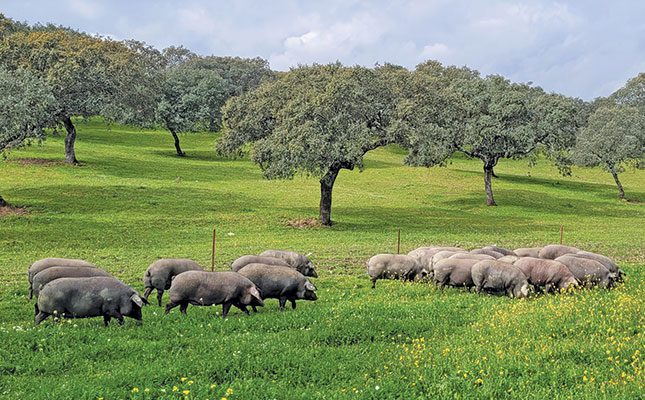
Photo: Lindi Botha
The hills of Los Pedroches in the Cordoba region of southern Spain provide imagery that will make any consumer’s heart sing.
The green, rolling hills are dotted with centuries-old acorn trees, wild flowers, herbs and grasses. Here and there a herd of black pigs huddle as they work their way through one patch to another, languidly sniffing out acorns for lunch.
READ Western Cape farmer’s model for running pigs on pasture
It’s the kind of picturesque production system that consumers wish were the norm, but which livestock farmers know doesn’t offer up much profit. Unless you can bank on a price of R1 500/ kg. That is the beauty of Iberian jamón, a ham produced by just 600 farmers in Spain, and world-renowned for its unique, sweet and nutty flavour.
To achieve top dollar, the ham must fulfil a list of criteria, including a Protected Designation of Origin certification. This means the ham must be produced in specific areas, since the environment has a big effect on the flavour of the meat.
Iberian jamón therefore joins elite products like champagne, Parmesan cheese and Parma ham, which can all only claim their title if produced in designated geographical areas.
In complete contradiction to most commercial farmers, Fernando Adell, owner of the Dehesa de Campo Alto farm in Los Pedroches, states that maintaining production methods put in place by his ancestors is his biggest challenge. “It’s a natural, sustainable system that requires no improvement.”
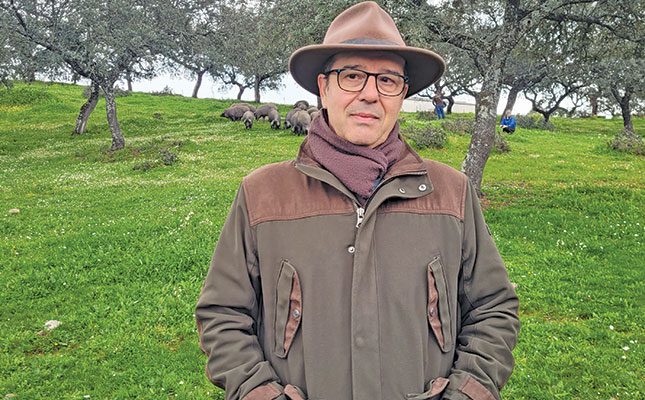
While Adell downplays his role as a farmer, saying he doesn’t need to do much since the pigs and fields take care of themselves in this extensive system, maintaining profitability is a ball game on its own.
And again in contradiction to most commercial farmers, Adell and his peers rely solely on nature to provide enough feed for the pigs. The Quercus ilex species of acorn trees are not fertilised to boost production, and last year’s drought, for example, meant that acorn availability shrunk, and consequently the amount of pigs Adell could keep on his farm.
It’s all in the diet
Entering the Dehesa de Campo Alto farm is like walking through a postcard. The 250-year-old acorn trees have trunks that twist and turn with character, and yellow wild flowers form a bright carpet that stretches towards the horizon.
But there is not a pig in sight. It’s only after a 2km walk that a grumble is spotted. And it’s not so by chance; industry regulations dictate that for Iberian jamón to receive its certification, pigs must be stocked at a rate of one pig per 1,5ha.
On Adell’s 600ha dehesa, which means meadow, there are currently 400 pigs. Some years, conditions only allow for half of that. The key is to ensure the pigs can live solely off the meadow for the last three months of their lives, eating up to 12kg of acorns daily, in addition to wild herbs and grasses.
This phase is referred to as la montanera and takes place during Spain’s autumn and winter, when acorns are in season. It is the diet as much as the exercise that add to the quality of the meat.
“The pigs walk for kilometres each day looking for food, developing muscle and allowing their fat to spread between the muscle, rather than just forming a top layer as is the case with pigs kept in feedlots,” says Adell.
The fat is arguably the component that makes Iberian jamón what it is. While the vibrant flesh is flavoursome, it is the melt-in-your-mouth fat that imparts the most joy in the eating process. So the better the spread of fat, the better the taste in each slice.
Keeping the bloodline pure
The Iberian pigs are the result of breeding that took place thousands of years ago between pigs brought to Spain by Phoenician traders and local wild boars. The result was the iconic Iberian pig, which is now registered and fiercely guarded.
The whole area of Los Pedroches is a closed system to prevent any other pigs from mating with the Iberian pigs and diluting the bloodline. This way, the farmers have also been able to keep swine flu out, as well as any other disease spread by other pigs.
Each year, pigs are either naturally mated or artificially inseminated with registered breeding material. The latter is one of the few modern methods used on these farms. The newborn pigs will then spend 21 months in a more concentrated feeding facility where they have a diet that includes cereals and more conventional commercial pig feed.
During the last three months of their lives before slaughter, the pigs roam the meadows, packing on 40% of their final weight. This is also where most of their fat is accumulated, hence the importance of the diet during this phase to impart the nutty flavour. At 24 months they are slaughtered at a live weight of between 160kg and 190kg.
Although from a nutritional point of view the meadows provide low levels of protein (5%), being richer in sugars (45%), fats (3%) and minerals (2%), the acorns impart a high proportion of oleic acid (63%) to the ham.
This means that the fat holds further benefits than simply being gastronomically enticing – they are good for the heart too. The oleic acid in the acorns is a monounsaturated fatty acid that is classified as a ‘good’ fat, beneficial in lowering cholesterol levels, and imparted to the pig when consumed.
With the flavour of Iberian jamón being entirely dependent on the marriage between breed, diet and geographic region, it is prudent to have a classification system in place to determine which hams are superior to others.
Discerning one ham from another can be so complicated that a colour code system was introduced in 2014 so that consumers can easily recognise what they are buying.
Hams with a black label, Jamón 100% Iberico, are the priciest and come from purebred Iberian pigs who spend at least the last 86 days of their life feeding on acorns and natural grasses. The hams must also be cured for at least three years. These hams can fetch up to R1 500/kg.
A red label, Jamón Iberico de bellota, is given to hams that come from pigs that are at least 50% Iberian. Duroc pigs are often used in breeding, making up the rest of the genetics. These pigs also feed solely on acorns for the last 86 days of their life. The red, green and white hams need only be cured for 24 months. Red label hams retail for around R1 230/kg.
Green label hams, Jamón de cebo de campo, come from pigs that are at least 50% Iberian. These pigs roam the meadows eating acorns, but their diet is also supplemented with grain. The hams retail for about R948/kg.
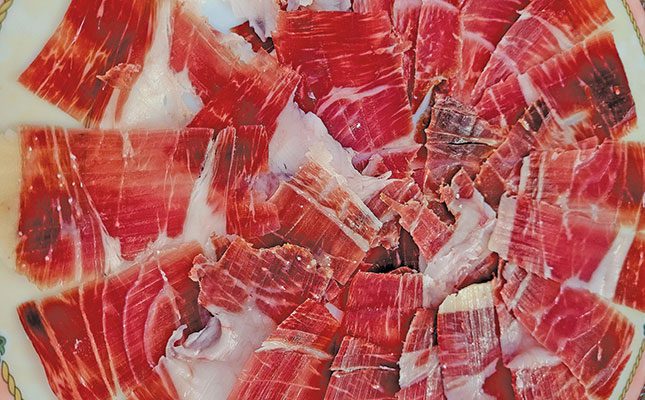
The white label, Jamón de cebo, is the lowest tier and consists of a mixed pig breed as per the red and green labels. They are however never sent to the meadow and their diets consist only of commercial pig feed. These hams go for around R367/kg.
With so much margin on the line, the regulations result in a lot of politics within the industry. Regulations have been changed various times over the years, as ‘black label’ farmers seek to protect the product that comes with a hefty production price tag, and others who also want to cash in on the margins.
Adell bemoans that there are those that use pictures of acorns on their labels when pigs don’t get anywhere near the dehesas.
And like the Parma ham and Parmesan industries, there is also food fraud to contend with. Genuine Iberian jamón legs and shoulders are therefore branded with barcodes and an individual number provided by the Regulatory Council that stays on the cut throughout the process to ensure its authenticity.
Growing the margin
If there is one aspect that the dehesa farmers have realised over the years is crucial to maintaining profitability in such an extensive system, it’s getting in on the value chain. For the Iberian jamón farmers, this has meant setting up their own curing facilities.
Whereas 40 years ago only 6% of the hams were cured in the valley, now 50% are processed. At Adell’s facility just over the hill from his farm, an underground cave is filled with hams in various stages of curing.
READ Want to start a pig farm? Read this first!
“Maintaining an even temperature throughout the year is important, which is why we use underground facilities to cure the hams. No cooling or heating facilities are used,” he explains.
The process starts with the hams, freshly cut, buried in salt for one day for every kilogram. Humidity is kept at 95% in these rooms. The hams are then washed off using a pressure hose and warm water, and then hung to cure for the required length of time. Considering the lengthy process, it is easy to see where the cost comes in.
Free-range, 100% Iberian pigs sell at a live weight of around R12 300 per carcass. But once put through the curing process, the ham alone will fetch that price.
Adell emphasises that nothing is wasted; the whole pig from snout to tail is used. The shoulders are also cured and sold as ham, while the rest of the meat is used to make sausages like the traditional chorizo.
Expertly carving the ham into slices
Carving up the ham is a specialised job in itself, and one that does not come cheap either. Juan Angel Pulido hovers over an Iberian jamón, mounted whole on a special stand at the Dehesa de Campo plant.
With a razor-sharp carving knife he slices uniform pieces of ham for our group to taste. The fact that he manages to get the perfect ratio of sweet, nutty fat and flesh into each slice is not by accident; he spent two years in training.
“It is a profession like any other in Spain,” Adell explains, since Pulido is so engrossed in the job at hand he fails to shift his gaze from the meat.
“A carver must be certified if you want to get the most from the ham, because the way in which it is cut up has a big effect on the eating experience and flavour. It’s also important to ensure that the maximum amount of quality slices is achieved from the ham and that nothing is wasted.”
With Iberian jamón being the pricey delicacy it is, getting maximum prestige for serving it at a gathering, carved up by a professional, is commonplace in Spain. It’s a party trick that can set you back as much as R9 000, especially if the carver is well known.
Iberian jamón is perhaps one of Spain’s best-kept secrets. Around 80% is consumed in Spain, with the rest exported mostly to the rest of Europe, the UK and Canada, compared with Italy’s Parma ham, whose statistics are reversed. But demand is growing, says Adell.
Maintaining the quality and reputation of Iberian jamón is therefore a chief concern for Adell, who understands the unique position he and his peers find themselves in, in being able to profitably produce meat off an extensive pasture system.
“You won’t easily find another system in the world where the production of meat of such high quality and with respect for the environment occurs in such an optimal way.
“Iberian jamón is essential for the territory and society. It not only generates quality products, but also shapes the landscape, helps to enhance biodiversity and conserves cultural heritage and territorial identity. We create jobs in the countryside and also in transportation and the different divisions of the food industry. And consumers get a gourmet product that is unmatched in flavour.”
Email Fernando Adell at [email protected].



